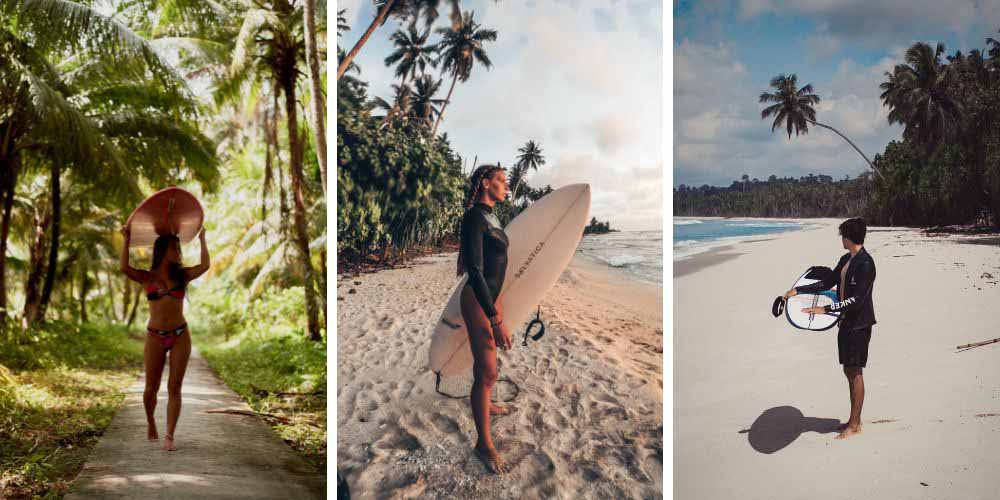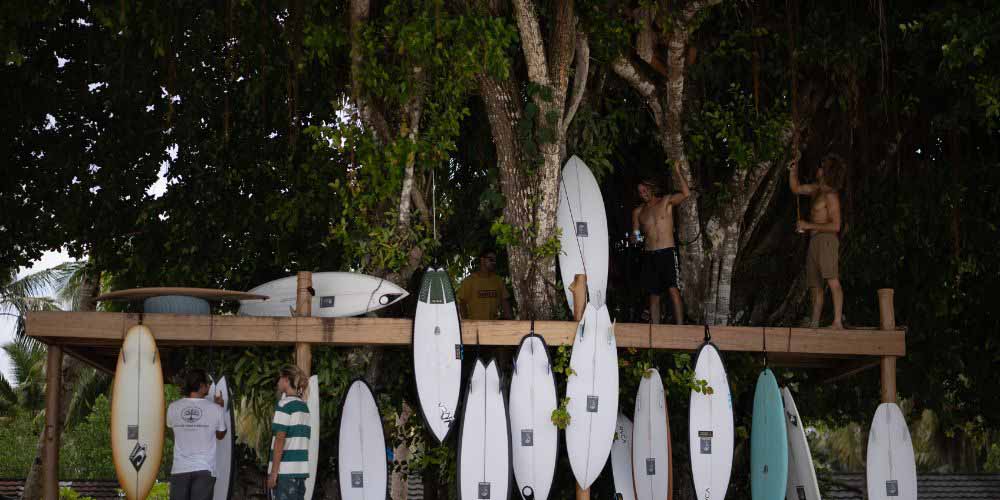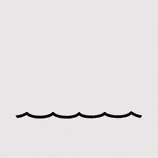As a beginner surfer, we can’t wait to get on a short board and duck dive to the lineup instead of carrying this heavy soft top and having to turtle roll all the time. Forget about looking cool; softies are so much fun, and you should enjoy it while it last because it’s so much easier catching waves with a softy! But we get the excitement of surfing a shorter board, and it’s good to challenge yourself!
However, choosing the right surfboard for your level is very important not only for your evolution but also for your and others’ safety.
We think that the size of our surfboard represents our surfing level, the smaller the board the better the level. That’s why many people tend to go too fast to a shorter board. But the choice of your surfboard has a huge impact on your surf experience. So, how do you choose the right kind of surfboard for your level or a specific type of wave? Let’s talk about all of this and go over some steps to make sure you choose the right surfboard fitted for you!
1. Size, volume, and material of your surfboard
Surfboards come in various sizes, materials, and volumes, each of which can have a significant impact on the surfing experience. It depends on what style of surfing you prefer, your skill level, and the wave conditions.
An obvious factor is the size of a surfboard. The size refers to its length, width, and thickness. Have you ever observed longboarders effortlessly paddling and catching waves? This ease comes from longer boards providing paddle power. They float more, making it much easier to catch waves, which makes longer boards more suitable for beginners and for smaller waves. Advanced surfers will more likely choose shorter boards because they are more maneuverable, so they can pull out all the cool tricks.
A less obvious but one of the most important factors in choosing a surfboard is the volume. Volume tells you how much space the surfboard takes up in the water. It’s usually measured in liters. Thicker boards with more volume float better and are easier to paddle and maintain balance and control, while thinner boards are easier to turn.
This type of board is ideal for surfers with less experience who are still struggling with balance, or they are very useful when you are having a lazy, non-energetic day but still want to get out there and catch some waves. But why wouldn’t we always take a surfboard with more volume? For experienced surfers who care more about doing fancy moves and turns, higher-volume boards might not be the best choice. These boards can feel a bit slow and less responsive, making them harder to maneuver. So, they might prefer a lower volume board, even if it means paddling a bit harder.
Nowadays, surfboards are mostly made of foam covered with a strong layer of fiberglass and resin. The type of material affects how heavy the board is. Lighter materials like EPS foam and epoxy resin make it easier to move the board around in the water. But heavier materials like traditional foam and fiberglass can make the board feel more stable, though they need more effort to turn.

2. Know your surfing level
So how do we know our surfing level exactly and why is it so important for choosing the right surfboard? Choosing a board that doesn’t match your surf level is, first of all, dangerous and comes with the risk of increasing fear of surfing. Surfing is all about relieving pressure and having fun. By choosing a non-fitting surfboard, you might have a negative experience, and we want you to develop a deep love for surfing! If you are not sure about your level, you can ask for expertise from your surf instructor or do some self-evaluation by going over this text.
Beginner:
As a beginner, you are learning how to paddle and pop up properly while surfing on a soft top. You are also learning about surf conditions, etiquette, and safety rules in the water to prepare yourself for going out on your own. You are only able to catch waves when you are pushed into them. You are still struggling as you try to accomplish everything you’ve learned. However, you are excited to improve yourself and to do better with every surf session, striving to catch green waves soon!
Advanced Beginner:
As an advanced beginner surfer, you are aware of the safety rules. you’re just starting to learn and understand the ocean. You’re able to practice by yourself in the water, with other surfers around guiding you for the best positioning. You’re more comfortable catching waves and starting to learn how to angle your surfboard on takeoff and catch waves sideways.
Intermediate Surfer:
You are capable of going out there by yourself; you know when and where to enter the water. You are more confident in crowded line-ups and more comfortable in catching hollow waves. You’re practicing maneuvering: bottom turn, top turn, cutback. You want to learn more advanced techniques to push your surfing to the next level!
Advanced Surfer:
You’ve been surfing consistently for years. You know the best surfing spots depending on the Surf forecast. You are aware of the right positioning, so you find yourself close by the peek. You are not scared of hollow waves and late take-offs. You are hunting barrels as trying to improve them and doing as many radical surf maneuvers as possible!
3. What is your level of fitness
When choosing a surfboard, considering your fitness level is important because it impacts how well you can handle different board sizes, shapes, and volumes. For example, a fitter surfer might opt for a smaller, more maneuverable board that requires more effort to paddle but provides better performance once on the wave. On the other hand, a less fit surfer might prefer a larger, more stable board that is easier to paddle and provides more stability.
4. What type of waves do you plan to surf
When selecting a surfboard, it’s essential to consider the type of wave you’ll be surfing. We can’t control the waves, but we can adapt our surfboard.
If you are planning on riding smaller, mellower waves, consider opting for a longboard or mini-mal. For shortboard lovers, twin fin or fish boards can also thrive in these conditions. If you’re planning to tackle bigger, more powerful, hollow waves, you’ll want a high-performance board like a tow board, classic shortboard, or minigun.

A good all-around board is a Hybrid board. With this board, you’ll be able to catch waves in almost every type of wave and It’s ideal when you are transitioning from a longboard to a shortboard!
Conclusion:
You’re not going to improve if you’re not able to catch waves. Remember to choose a surfboard that matches your skill level and the type of waves you’ll be riding, and always make sure to stay safe while you’re in the water!
Choosing the right surfboard might be difficult. Visit Hollow Tree’s Resort, an all-inclusive surfing resort in Mentawai, where you’ll not only enjoy surfing but also be guided by our surf instructor to choose the surfboard that fits your skill level.
Read read:
Surfing exercises to improve paddling and stability strength, How to Share Waves, and Respect Other Surfers




